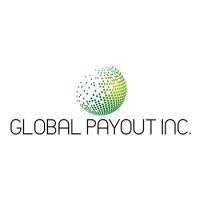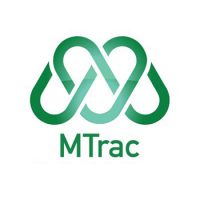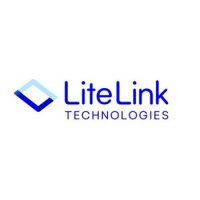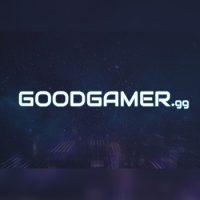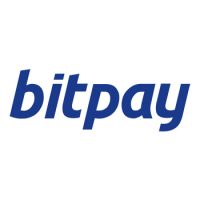Blockchain
Artprice: The 10 Top-selling Artworks Created After the 2008 Financial Crisis

 Reading Time: 4 minutes
Reading Time: 4 minutes
The year 2008 marked a turning point for the Art Market and for the global economy as a whole. In retrospect, Sotheby’s 15 September 2008 sale Beautiful Inside My Head Forever dedicated to works by Damien Hirst – just hours before the collapse of Lehman Brothers Bank and its repercussions on art sales throughout the world – now looks like the swan song of a different era.
However, as thierry Ehrmann, Founder/CEO of Artprice tells us, “The impact of the financial crisis did not affect artistic creation; the significant changes we have seen since 2008 are essentially due to changes within the internal structure of the Art Market.
“The main development is of course the growth of the Chinese market, but we have also seen the growth of Art as a financial investment. Negative or near-zero interest rates, which undermine the value of savings, have increasingly pushed capital towards alternative investments… and Art generates very attractive returns. The large number of artworks created over the last ten years that have already sold in public auctions prove that Contemporary Art represents a sensational market.”
Global Fine Art auction turnover
[https://imgpublic.artprice.com/img/wp/sites/11/2019/04/auction-turnover.png]
Artprice presents 10 artists who have already marked the secondary market with works created after the 2008 financial crisis.
1. Cui Ruzhuo (b. 1944): The Grand Snowing Mountains (2013)
$39,577,000 – 4 April 2016, Poly Auction, Hong Kong
The Chinese painter Cui Ruzhuo is one of the most successful living artists in the Art Market, on a par with Gerhard Richter and David Hockney. However, unlike the latter two, his best works – those for which demand is the strongest – are his most recent. The result hammered for a mountain-scene panorama measuring over 8 meters wide and 3 meters high – The Grand Snowing Mountains (2013) – illustrates the immense success of this new giant of Chinese painting who remains far too unknown in the West.
2. Jeff Koons (b. 1955): Popeye (2009/11)
$28,165,000 – 14 May 2014, Sotheby’s, New York
A month before his retrospective began at the Whitney Museum (27 June 27 – 19 October 2014), the Prince of Kitsch Jeff Koons saw his Popeye sculpture (2009/11) become the subject of furious bidding at an evening sale at Sotheby’s New York. The sculpture, the first in a series of three, was to be one of the highlights of the Jeff Koons exhibition at the Whitney Museum, and was also shown at the Centre Pompidou in Paris and the Bilbao Guggenheim.
3. Mark Grotjahn (b. 1968): Untitled (S III Released to France Face 43.14) (2011)
$16,767,500 – 17 May 2017, Christie’s, New York
Represented by the Gagosian Gallery since 2008, the American painter Mark Grothjahn saw his prices rise gradually until 2017. Then, in the space of just twelve months, his price index shot up 75%… before falling back again the following year. In 2018, another of his large format paintings, Untitled (Black over Red Orange “Mean as a Snake” Face 842)(2010), fetched $7,073,000.
4. Gerhard Richter (b. 1932): Abstraktes Bild (2009)
$9,093,300 – 5 March 2019, Sotheby’s, London
Large abstract paintings by Gerhard Richter are among the most expensive artworks in the world. In February 2015, Abstraktes bild (1986) fetched over $46 million setting a sensational record for Germany’s Art Market leader. The sale of Abstraktes Bild (2009) shows that collectors are increasingly valuing his recent production, which could be as valuable as his earlier works (1965 – 1990) in the long run.
5. Rudolf Stingel (b. 1956): Untitled (2012)
$7,939,000 – 8 March 2018, Phillips London
Rudolf Stingel is also supported Larry Gagosian and has also greatly benefited from the dealer’s international power and standing. In 2015, the Gagosian presented Stingel’s work in Asia for the first time with a series of paintings Untitled(2012) that reproduced wall fragments from his double exhibition at the Chicago Museum of Contemporary Art and the Whitney Museum in New York in 2007. During those shows, visitors were invited to write inscriptions of all kinds on the walls of the two prestigious museums. Stingel reproduced certain details using electro-formed copper which he subsequently covered with gold.
6. Jin Shangyi (b. 1934): Peony Pavilion (2013)
$7,829,400 – 31 May 2014, China Guardian, Canton
Chinese painter Jin Shangyi is a master oil painter. Known for his portraits (including female nudes in the late 1980s), he is one of the most original Chinese artists of his generation. His work was much in demand in 2013, as shown by the value of his 1999 canvas Monk Painter Kun Can:
– $2,088,500, 13 May 2007 – China Guardian, Beijing
– $6,326,500, 1 June 2013 – Poly Auction, Beijing
– $4,436,500, 16 June 2018 – China Guardian, Beijing
7. Yayoi Kusama (b. 1929): Pumpkin (TWPOT) (2010)
$6,937,500 – 1 April 2019, Sotheby’s, Hong Kong
She is the most successful female artist on the global Art Market, all periods of creation combined. The 707 works by Yayoi Kusama auctioned around the world in 2018 generated $103 million, covering more than sixty years of artistic creation from the early 1950s to canvases painted in the past 5 years, which are already being resold.
8. Adrian Ghenie (b. 1977): Boogeyman (2010)
$6,354,000 – 5 October 2018, Sotheby’s, London
The youngest artist in this ranking and the figurehead of new European expressionism, the Romanian painter Adrian Ghenie joined the Pace Gallery in 2013 and his work has already been purchased by some of the world’s leading Contemporary Art museums, including the Centre Georges Pompidou. Both tenebrous and colorful, his paintings do not hide the influence of Van Gogh and Francis Bacon, sometimes with quite direct references.
9. George Condo (b. 1957): Nude and forms (2014)
$6,162,500 – 17 May 2018, Christie’s, New York
In 2018, George Condo conquered the world. With more than $55 million in auction turnover between New York (56%), London (30%) and Hong Kong (12%), Condo is one of the top 50 most successful artists of all time. His market is now more active than that of Jasper Johns or Frank Stella.
10. Mark Tansey (b. 1949): Hedge (2011)
$5,653,000 – 14 May 2015, Phillips, New York
Although Mark Tansey’s works rarely appear at auction (a total of just 103 lots over the last 30 years), demand is ever-stronger for his work. Today his market is entirely divided between New York (90%) and London (10%), but he is very likely to be sold in Asia soon.
SOURCE Artprice.com
Blockchain
EAT & BEYOND ANNOUNCES PROPOSED NAME CHANGE AND UPDATED INVESTMENT POLICY
Blockchain
Blocks & Headlines: Today in Blockchain – May 30, 2025 (Fraser Edwards, Kyiv NFT, Spirit Blockchain Capital, Indian eHealth, Hedera)
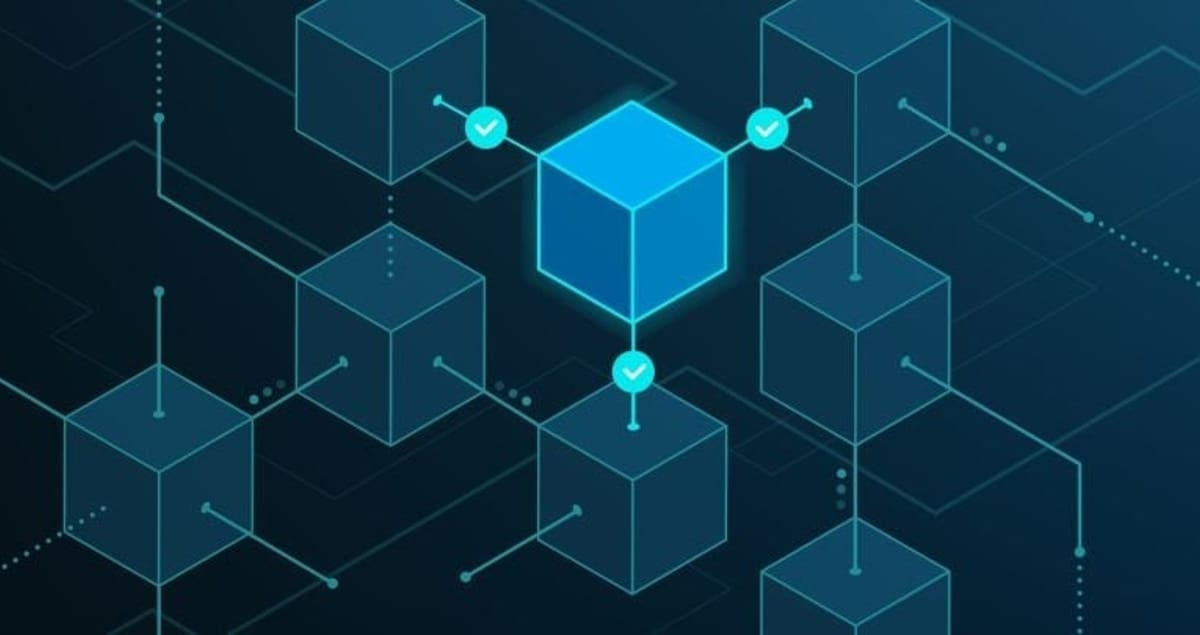
Blockchain technology and cryptocurrencies continue to redefine industries—from competitive gaming and cultural heritage preservation to corporate finance, healthcare, and alternative tokens. Today’s briefing highlights five pivotal developments shaping the ecosystem: Fraser Edwards’s vision for trust in eSports; Ukraine’s wartime cultural preservation via NFTs; Spirit Blockchain Capital’s Q1 2025 operational report; India’s push for blockchain-enabled electronic health records (EHRs); and the rise of viral altcoins such as UniLabs, Sui, and Hedera Hashgraph. Together, these stories illustrate the themes of trust and identity, preservation and provenance, institutional maturation, public-sector innovation, and token diversification. In this op-ed–style round-up, we distill the essence of each story, cite sources, and offer analysis on how they advance Web3, DeFi, and NFT frontiers.
1. Rebuilding Trust in eSports: Can Blockchain Fix Competitive Integrity?
Source: CCN
Summary:
In a recent CCN interview, veteran trader and eSports investor Fraser Edwards argues that blockchain’s immutable ledgers can restore credibility in the rapidly commercializing world of competitive gaming. According to Edwards, match-fixing scandals and opaque prize-pool distributions have eroded fan confidence. By tokenizing tournament entries and payouts on public blockchains—complete with smart-contract–enforced escrow—organizers can guarantee that prize monies are distributed exactly as advertised, and that no post-match manipulation occurs. Tournament operators in Asia and North America are already piloting Ethereum-based payout dApps, aiming to increase transparency for players and sponsors alike.
Key details & analysis:
-
Smart-contract escrow: Funds are held in a time-locked contract that releases prize money only upon verifiable match results. This prevents disputes over referee decisions or delayed payments.
-
On-chain reputation: Player and team reputations can be tokenized via non-fungible reputation badges that accrue based on fair play and community votes—discouraging cheating.
-
Scalability concerns: High-traffic tournaments may require Layer 2 rollups or alternative chains (e.g., Polygon, Immutable X) to reduce gas costs and latency.
Opinion: Blockchain’s dual promise of provable fairness and programmable finance makes it uniquely suited to eSports. Yet adoption hinges on UX: seamless wallet integrations, minimal transaction fees, and clear regulatory guidance on esports tokens.
2. When Art Meets Blockchain: Ukraine’s Wartime Cultural Preservation
Source: The Kyiv Independent
Summary:
As monuments crumble under artillery fire, Ukrainian curators and technologists are partnering to mint NFTs representing lost or endangered artifacts. The Kyiv Independent reports that the National Art Museum of Ukraine has launched “Project Phoenix,” tokenizing high-resolution 3D scans of sculptures, manuscripts, and paintings. Proceeds from initial sales fund restoration and digital archiving efforts. Each NFT embeds provenance metadata—including GPS coordinates, curator notes, and condition reports—ensuring that future generations can verify authenticity and context, even if the physical artifact is destroyed.
Key details & analysis:
-
Metadata richness: Beyond simple ownership, NFTs store structured metadata—using ERC-721 metadata extensions—that capture curatorial insights and conservation logs.
-
Decentralized archives: IPFS and Arweave are employed to host ultra-high-resolution imagery, with on-chain hashes guaranteeing data integrity.
-
Community engagement: Fractional-NFT drops allow diaspora communities to collectively own tokens, strengthening cultural ties and crowdfunding preservation.
Opinion: Blockchain’s ability to immutable record heritage provides a lifeline for war-torn nations. However, ensuring that local institutions retain governance over metadata edits and future migrations is critical to avoiding “cultural colonialism” by global NFT marketplaces.
3. Spirit Blockchain Capital’s Q1 2025 Highlights: Growth, Investments, and Outlook
Source: GlobeNewswire
Summary:
Spirit Blockchain Capital’s Q1 2025 report benchmarks the firm’s operational milestones and financial performance. Assets under management (AUM) climbed 45% to $1.02 billion, driven by strategic allocations to top-tier Layer 1 and Layer 2 protocols, DeFi liquidity pools, and a newly launched token-index fund. Operating income rose 37%, fueled by management fees and performance incentives. The firm also closed its second blockchain-focused venture fund at $150 million, earmarked for early-stage Web3 projects in gaming, infrastructure, and decentralized identity.
Key details & analysis:
-
Diversification strategy: 60% of AUM in blue-chip cryptocurrencies (Bitcoin, Ethereum); 25% in DeFi (Aave, Uniswap, Lido); 15% in tokenized commodities and NFTs.
-
Fund performance: The flagship fund delivered a 9.8% return in Q1, outperforming the 6.2% benchmark set by the Bloomberg Galaxy Crypto Index.
-
Venture investments: Early stakes in zero-knowledge proof startups and decentralized storage platforms signal confidence in scalability and privacy innovations.
Opinion: Spirit’s robust growth and disciplined diversification mirror institutional maturation in the blockchain asset management space. As regulatory clarity improves, expect further inflows from endowments, pensions, and family offices.
4. Blockchain EHRs in India: The Next Digital Health Revolution
Source: ORF
Summary:
The Observer Research Foundation (ORF) details India’s pioneering pilot of blockchain-backed electronic health records (EHRs) in the state of Andhra Pradesh. By leveraging a permissioned Hyperledger Fabric network, the initiative ensures that patient records—from vaccination histories to diagnostic imaging—are securely shared across hospitals, clinics, and pharmacies. Patients control access via digital identities anchored to India’s Aadhaar system, granting temporal permissions for data viewing and preventing unauthorized sharing.
Key details & analysis:
-
Interoperability: HL7 FHIR standards are mapped to on-chain transactions, enabling seamless data exchange with existing hospital information systems (HIS).
-
Privacy safeguards: Off-chain storage of PHI (Protected Health Information) is encrypted with patient-held keys; only hashed pointers reside on-chain to ensure immutability without exposing sensitive data.
-
Regulatory alignment: The pilot aligns with India’s draft Digital Health Act, which emphasizes data sovereignty and patient consent frameworks.
Opinion: Blockchain EHRs can democratize healthcare access in a populous nation—but success depends on user-friendly portals, robust identity verification, and contingency plans for network outages in rural areas.
5. The Hottest Viral Altcoins of 2025: UniLabs, Sui, and Hedera Lead the Pack
Source: TronWeekly
Summary:
According to TronWeekly, the altcoin landscape in 2025 is dominated by three viral tokens: UniLabs (UNI-L), Sui (SUI), and Hedera Hashgraph (HBAR). UniLabs, a governance token for a decentralized laboratory network, saw a 1,200% year-to-date surge on news of its AI-driven drug-discovery partnership. Sui’s Move-based smart-contract platform gained traction for sub-second finality and low gas fees, with total value locked (TVL) surpassing $2 billion. Hedera’s HBAR continues its enterprise pivot, securing multi-year agreements with global brands for identity verification and supply-chain tracking.
Key details & analysis:
-
UniLabs use case: Token holders vote on research grants and share in royalty revenues from patented compounds developed on-chain.
-
Sui performance: With a novel object model and horizontal sharding, Sui supports over 3,000 TPS (transactions per second) without compromising on decentralization.
-
Hedera enterprise: The Governing Council—comprising Boeing, Google, and LG—bolsters confidence in HBAR’s governance model and paves the way for compliant enterprise deployments.
Opinion: These tokens exemplify the diversification of blockchain applications. Investors should assess not only market hype but also protocol fundamentals—developer activity, economic incentives, and real-world adoption.
Cross-Story Trends & Key Takeaways
-
Trust & Transparency at the Core
From esports prize-pool ledgers to wartime NFT archives and permissioned health records, blockchain’s immutability fosters verifiable trust—a prerequisite for mainstream adoption across sectors. -
Institutional & Public-Sector Innovation
Spirit Blockchain Capital’s fund growth and India’s EHR pilot signal that both private and government entities view blockchain as a strategic infrastructure, not just speculative assets. -
Vertical Specialization Fuels Token Growth
Viral altcoins like UniLabs, Sui, and Hedera thrive by addressing niche use-cases—governance in biotech, scalable DeFi rails, and enterprise identity—underscoring the importance of purpose-built protocols. -
Metadata & Provenance Drive NFTs Beyond Art
Ukraine’s cultural NFTs demonstrate how rich on-chain metadata can preserve heritage, while esports applications show that reputation tokens can enforce fair-play credentials. -
Ecosystem Maturation Requires UX & Governance
Across all stories, user experience—wallet onboarding, identity verification, metadata curation—and robust governance frameworks (tokenomics, regulatory alignment) emerge as decisive factors in blockchain’s next wave.
Conclusion
Today’s blockchain headlines reveal a maturing ecosystem where trust, transparency, and targeted innovation unlock new frontiers—from safeguarding digital heritage amid conflict to revolutionizing healthcare and sports. As institutional players allocate billions, and public-sector pilots chart regulatory pathways, the fate of tomorrow’s Web3 landscape hinges on seamless UX, rigorous governance, and demonstrable real-world utility. Stay tuned for tomorrow’s Blocks & Headlines, where we’ll continue tracking the trends, tokens, and technologies that define the blockchain revolution.
The post Blocks & Headlines: Today in Blockchain – May 30, 2025 (Fraser Edwards, Kyiv NFT, Spirit Blockchain Capital, Indian eHealth, Hedera) appeared first on News, Events, Advertising Options.
Blockchain
Kyrgyz Republic to launch USDKG, a gold-backed stablecoin pegged to the U.S. Dollar, in Q3 2025

USDKG
-

 Blockchain Press Releases3 days ago
Blockchain Press Releases3 days agoRain Expands Support to Solana, Tron, and Stellar, Enabling More Partners to Launch Stablecoin-powered Card Programs
-

 Blockchain Press Releases3 days ago
Blockchain Press Releases3 days agoBybit Secures MiCAR License in Austria, Opens European Headquarters in Vienna with Strategic Expansion Plan
-

 Blockchain Press Releases6 days ago
Blockchain Press Releases6 days agoFlipster Reveals Middle East Expansion Plans and Appoints Regional Leadership to Bolster Crypto Trading
-

 Blockchain3 days ago
Blockchain3 days agoBlocks & Headlines: Today in Blockchain – May 29, 2025 (Vaulta, Fosun, Signing Day Sports, Credit Unions, Gaming Innovations)
-

 Blockchain Press Releases5 days ago
Blockchain Press Releases5 days agoCoinW Teams Up with Superteam Europe to Conclude Solana Hackathon and Accelerate Web3 Innovation in Europe
-

 Blockchain5 days ago
Blockchain5 days agoBlocks & Headlines: Today in Blockchain – May 27, 2025 Featuring Blockchain.com, Bilal Bin Saqib, XRP Ledger, Unstoppable Domains, ReNEW, MEXC Ventures
-

 Blockchain6 days ago
Blockchain6 days agoBlocks & Headlines: Today in Blockchain – May 26, 2025 (Lightchain AI, Cetus Hack, Bilal Bin Saqib, The Blockchain Group)
-

 Blockchain Press Releases7 days ago
Blockchain Press Releases7 days agoAB Charity Foundation X AB Blockchain Join Forces to Advance the Global “Tech for Good” Mission















